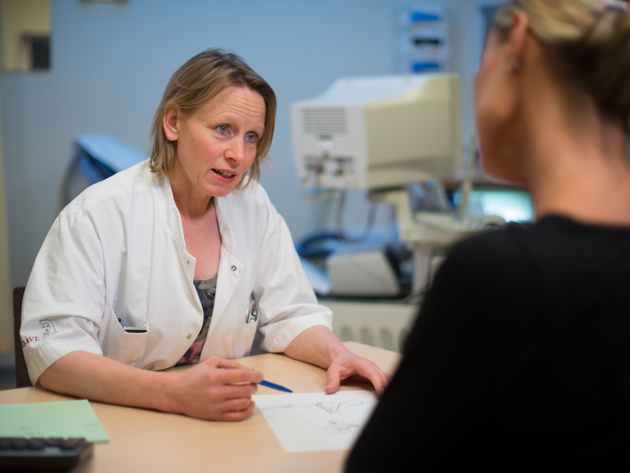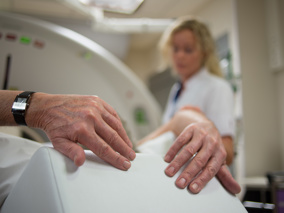Ovarian cancer - hereditary and familial
In ovarian cancer , a malignant tumor grows in one or both ovaries. The cause is usually not clear, but in about 10 out of 100 women, a hereditary predisposition can play a role in the development of ovarian cancer. This means that there is an error in the DNA. Such an error in the DNA is called a mutation. This mutation increases the risk of ovarian cancer.
More information about hereditary/familial ovarian cancer
Hereditary causes of ovarian cancer
There are several genes (pieces of DNA) that play a role in the development of ovarian cancer. The most important genes are called BRCA1 and BRCA2.
- Women with a mutation in the BRCA1 gene have a 35 to 45% chance of developing ovarian cancer.
- Women with a mutation in the BRCA2 gene have a 10 to 20% chance of developing ovarian cancer.
A woman in the Netherlands without a mutation has a slightly less than 1% chance of ovarian cancer.
In addition to BRCA1 and BRCA2, there are also mutations in other genes that increase the risk of ovarian cancer:
- A mutation in genes BRIP1, PALB2, RAD51C or RAD51D
- Lynch syndrome: a mutation in the genes MLH1, MSH2 or MSH6
- Peutz-Jeghers syndrome
The risk of ovarian cancer with a mutation in these genes is different, but is smaller than with mutations in the BRCA1 or BRCA2 gene.
Familial ovarian cancer
Sometimes ovarian cancer is more common in a family, but no hereditary predisposition has been found. This is called familial ovarian cancer. The risk of ovarian cancer is then smaller than with a hereditary predisposition (with a mutation in the genes). However, the risk may be higher than if there is no ovarian cancer in the family. How big that chance is depends on the family and the person. If the risk of ovarian cancer is higher in a family, a doctor may sometimes recommend that the ovaries be removed.
Symptoms of ovarian cancer
Ovarian cancer often does not cause any symptoms in the beginning. The tumor can continue to grow without affecting other organs. As a result, it sometimes takes a long time before you notice something. Possible symptoms of ovarian cancer include:
- Bloated belly
- Feeling full quickly
- No hunger or appetite for food
- Nausea
- An annoying or pressing feeling in the lower abdomen
- Needing to urinate more often than usual
Other possible complaints are:
- Gastrointestinal complaints, such as constipation or diarrhea
- Being very tired all the time
- Losing weight for no apparent reason
- Unexpected (abnormal) bleeding: blood loss after menopause, or blood loss between menstruations.
Women with a mutation in the BRCA1 or BRCA2 gene are also more likely to develop breast cancer. That is why it is important to also have your breasts checked from the age of 25.
Ovarian cancer treatment
Women with a mutation in the BRCA1 or BRCA2 gene are advised to have their ovaries removed. Women who do not have a mutation in their DNA, but who do have two or more close relatives with ovarian cancer, are also given this advice. This surgery reduces the risk of ovarian cancer.
- In the case of a mutation in the BRCA1 gene, this usually happens between the ages of 35 and 40.
- In the case of a mutation in the BRCA2 gene or in women with multiple family members with ovarian cancer, this usually happens between the ages of 40 and 45.
 nl
nl



